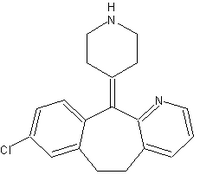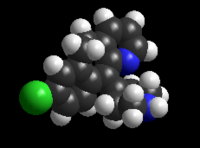Clarinex
Desloratadine is a drug used to treat allergies. It is marketed under several trade names such as NeoClarityn®, Claramax®, Clarinex® and Aerius®. It is an active metabolite of loratadine, which is also on the market. more...
Available forms
Desloratadine is available as tablets and oral suspension.
Mechanism of action
Desloratadine is a tricyclic antihistamine, which has a selective and peripheral H1-antagonist action. It has a long-lasting effect and does not cause drowsiness because it does not readily enter the central nervous system. It is 10-20 times more potent as an antihistamine than loratadine.
Pharmacokinetics
Desloratadine is rapidly absorbed from the gastro-intestinal tract. Desloratadine is moderately bound to plasma proteins (85%). The half-life of desloratadine is on average 28 hours. About 40% is excreted as conjugated metabolites into the urine and similar amount into the feces. Traces of unmetabolised desloratadine can be found in the urine.
Side effects
Most common side-effects are fatigue, drowsiness, dry mouth, headache, and gastrointestinal disturbances.
Desloratadine vs. loratadine
A November 2003 article published in the journal American Family Physician about the safety, tolerability, effectiveness, price, and simplicity of desloratadine concluded the following:
- Desloratadine is similar in effectiveness to fexofenadine and would be expected to produce results similar to loratadine and other nonsedating antihistamines. There is no clinical advantage to switching a patient from loratadine to desloratadine. However, it may be an option for patients whose medical insurance no longer covers loratadine if the co-pay is less than the cost of the over-the-counter product.
Read more at Wikipedia.org



